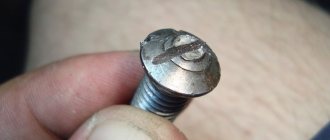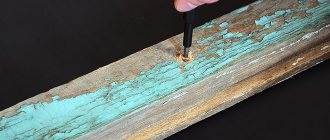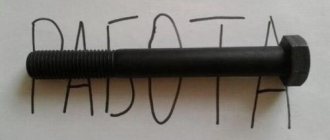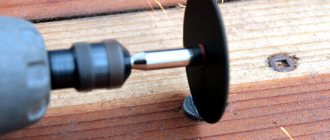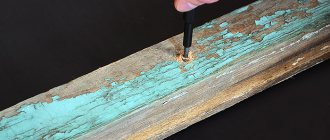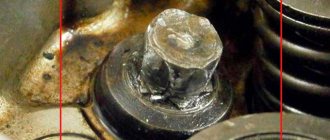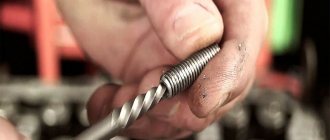Application of specialized heads
To unscrew a bolted connection that cannot be easily removed, specially designed heads are used. The problem occurs when the threads are stripped or the edges of the head are worn.
These heads include the so-called SL and UPK heads. They are specially designed for unscrewing bolts that have “licked” edges or are torn off and spin. A distinctive feature is the increased contact area between the inside of the head and the surface of the cap.
The main condition for the use of such heads is the exact selection of the internal size of the head to the size of the broken bolt.
Rusted nut
Another problem that is familiar to car enthusiasts (and not only) is a rusted nut and/or thread. In this case, you should not make heroic efforts to unscrew the fasteners. Your edges will simply “stick together” and another problem will be added to the boiling thread. If after a couple of attempts you can’t unscrew it, try the following methods one by one:
- Tap the bolt with a wrench. There is a chance that the rust will crack and the nut will be unscrewed.
- Fill the connection with kerosene and wait. It will eat away the rust, after which it will be easier to unscrew the rusted nut. But during this operation you cannot smoke, turn on welding, or be near an open flame.
Not the most elegant, but effective solution
Removers for broken nuts
Using a grinder and drill
When all possible options have been exhausted, and the problem of how to unscrew the bolt remains unresolved, they proceed to the most radical remedy. A grinding machine called a grinder and an electric drill with a set of drills are used.
A metal cutting wheel (preferably a thin one with diamond coating) is attached to the grinder. With its help, the cap is cut off at the very base. Then use a drill with a drill bit. The diameter of the drill is selected based on the diameter of the rod. It is advisable to carry out preliminary drilling with a smaller diameter. Then use a drill equal in diameter to the size of the rod. It is necessary to drill out carefully.
The thread will have to be restored again after these operations.
Don't forget about prevention
Methods for removing rusty parts - otherwise, no matter how you say it, you need to report hard and spend an hour. To avoid this, it is better to take preventive visits.
- The nuts that secure the muffler in the car or wheels are coated with anti-corrosion agents and then with grease.
- If you skimp on saw parts, sand and other obstructions speed up the oxidation process and increase the risk of fermentation, which then more often affects not only the parts of the vehicle, but also the entire car.
- Vikorist only clear fastenings with a high class of value. Saving on bolts and nuts can lead to their immediate failure and damage to adjacent assemblies.
- If possible, save transport costs in the garage. Parts of the litter are harmful not only on the body, but also on the fastenings.
- Keep an eye on the plumbing. If the faucet in the kitchen or bathroom is leaking, there will soon be a problem. Why do you have to remove the mixer and change the gaskets? In this manner, you are not only protecting against premature failure, but also fastening elements from the creation of damage.
- Lock up reliable tools. It’s not cheap to build, but in the process of operation, show yourself only the positive side.
As you know about threaded pipes, check them regularly to ensure there are no molasses on them. If necessary, promptly replace gaskets and other parts to ensure tight connections.
Drilling
One of the methods that allows you to remove rusty and welded bolts, destroying them completely. It is used in cases where a bolt is turned. This method is especially convenient if during operation of the mechanism the edges of the head were damaged (licked off).
At the preparation stage, the diameter of the required drill is determined. To do this, subtract the pitch of the existing thread from the diameter of the bolt.
After selecting a drill, it is necessary to eliminate the effect of the drill moving to the side during the drilling process. To solve this problem, devices called conductors are used. Structurally, this is a plate with holes into which sleeves equal to the diameter of the drill are inserted. They do not allow the drill to go to the side during operation.
If fasteners of large diameter are drilled, two holes are drilled on the side of the center to a depth of ten millimeters. Insert metal pins (nails, studs of suitable diameter) and try to turn the old bolt.
If the thread gives in, the problem is solved. If not, you should drill the hole completely to the full depth or all the way through. Then remove any remaining metal.
How to unscrew a broken bolt using a drill with a left-hand spiral
In two stages:
- First you need to take a regular nozzle and center it.
- Then arm yourself with the one that rotates counterclockwise (let it be a little larger in diameter) and, using it, gradually remove the body.
You should be careful and control the direction of movement - then the edges of the working rod will catch the remaining hardware, pushing them upward, but without destroying the thread. If any damage occurs, it will be so minor that you can easily fix it with a tap. This method is effective when the fastening joint is not yet very rusty or stuck.
Thermal method
One of the ways to solve the problem of how to remove a bolt with a broken thread or a slipping head is the thermal method. The basis is the heating process (if this is permissible and the possibility of creating conditions exists). The fastener is heated until it turns red. This heat treatment leads to a decrease in the resistance coefficient as a result of corrosion. This will allow you to unscrew it with ordinary plumbing tools. The heating process is carried out in thermal installations, using a blowtorch or gas burner.
The use of the method is not always justified. Heating even a certain part of a part or one fastening unit can negatively affect other structural elements, lead to damage to the anti-corrosion coating, and changes in pre-hardening parameters.
How to remove a bolt if it is broken and nothing helps or the thread is already badly damaged
In such a difficult situation, you should drill a hole so that its width is sufficient for cutting new turns. Although the hardware may be hardened and difficult to give in. Then it must be subjected to heat - heated red-hot - and then left to cool. It is strictly forbidden to forcibly cool it with water - too sharp a temperature rise will only lead to the appearance of cracks.
The operation of slowly changing the temperature regime must be carried out several times. Due to this, the metal will be tempered and slightly softened, and the damaged element will become easier to drill out. But if the body of the part (unit, functional unit) is made of aluminum, special care should be taken to ensure that the surface in the heating zone does not warp.
Application of the extractor
Specially designed tools that allow you to unscrew a spinning bolt, remove the remains of a broken fastener or part remaining inside the hole. They are used to remove any fastening elements (screws, studs). The principle of operation of the extractor is to drill a hole in the center and then jam the hole with the tip of the extractor. The depth of its placement depends on the nature of the wear of the head and rod, the degree of corrosion on the threads.
Extractors can be internal or external. In design, it resembles a tap for threading. It has a square shank. This allows you to use a standard crank to rotate it.
Modern manufacturers of metalwork tools offer the following types of extractors:
- wedge-shaped;
- made in the form of a rod;
- spiral shape;
- have the shape of a screw.
The method of using these devices does not cause difficulties even for non-specialists. This technology can be found in the instructions that come with each set of extractors. Before you begin, you should prepare the following metalworking tools: hammer, core, pliers, clamp, tap driver, drill, set of drills and the required extractor. First you need to drill a hole in the center in the shaft of the bolt to be removed. To get an accurate hole you need to use a jig. If this is not possible, you should manually mark the point of the future hole using a core and a hammer. Next, a guide hole is drilled in this place. It is recommended to drill to a depth that is three times the diameter of the selected drill. During drilling, the centering and vertical position of the drill relative to the plane of the bolt must be strictly observed.
An extractor is inserted into the finished hole. For reliable fixation, it is allowed to make several blows with a hammer on the tool. Using a wrench, which is used for cutting threads, begin to slowly screw the extractor into the drilled hole. It is necessary to screw in until it stops. Further force should cause the bolt to rotate. The force must be applied carefully without displacement. Otherwise, you may break the extractor itself. Instead of one broken bolt, you get two broken parts, firmly attached to each other.
Experience from similar work shows that when part of the bolt is unscrewed, it is advisable to use pliers or a clamp. With their help, the broken product is completely removed.
Therefore, experts advise that before embarking on radical methods of removing faulty bolts, screws and studs, you should try an extractor. Its use will preserve the thread and eliminate the need to machine the hole for new fasteners.
Dismantling in difficult cases
In case of various installation errors, the anchor becomes jammed and it is impossible to remove or push the bolt.
The sleeve is completely driven into the wall
This is the most common case. If you need to remove an anchor from a concrete wall, we are usually talking about an indoor space. The best recipe is to break the plaster around so that the pliers catch on the edge of the sleeve.
If you need to remove the anchor without damaging the adjacent surface (primarily tiles or plastic window slope):
- Remove the nut, knock out the bolt or loosen it (for a frame structure).
- Screw a thin self-tapping screw between the bolt and the sleeve until it jams.
- Place something for support (for example, a hammer).
- Grasp both studs and pull out the structure.
If the first option doesn't help:
- Remove the nut and knock out the stud or unscrew the bolt.
- Use a thin nail or self-tapping screw as a wedge to tear and bend the edge of the sleeve.
- Grab the cartridge by the bent edge (it’s convenient to first pull it with narrow- or round-nose pliers; when the edge is released enough, take pliers) and pull it out.
- For a frame anchor, insert it into the concrete passage and screw the bolt into the spacer and remove everything together.
The anchor is rusty
A slightly rusted anchor bolt can be restored with automotive rust converter, machine lubricant, or WD-40 remover.
- Remove the top layer of dirt and, if possible, rust.
- Treat the head and nut, if possible, spray deep into the converter.
- Maintain the time specified in the instructions for the product.
- If necessary, repeat the procedure.
- Try to carefully unscrew the bolt.
Advice On the forums they suggest treating oxidized parts with kerosene or VD-40 and leaving for half a day for the product to take effect.
The slot on the bolt is torn off
Broken splines are a fairly rare occurrence on anchor fasteners. However, if this happens, it is not necessary to dismantle the wall. Try drilling out the head, or the rod if there is no head, to remove the bolt from the threads. An “extractor” for screws and screws copes well with this task. This is an inexpensive device with attachments that are suitable for both a screwdriver and a drill. You can buy it on AliExpress for little money.
How to use the extractor:
- Attach and secure the bit with the drill (curved cross) facing down.
- Drill a hole in the stud or bolt head.
- Turn the extractor over with the wedge-shaped end facing down and screw it into the stud.
- Engage reverse and release the broken bolt using the extractor.
With proper installation and operation, the anchor bolts are removed with force, but quite simply. In rare cases, when it is impossible to hook the sleeve (for example, bad steel, the edge breaks) or the fastener is “stuck” tightly, the only option remains is to cut off the head or cut the anchor itself with a Bulgarian saw. If the anchor was holding a Swedish corner or other weight on the wall, perhaps the best option is to drive in a stud and cover everything with a wooden bobbin or cement and simply put finishing plaster on top.
Alternative Methods
One such method is to weld a nut onto the broken part of the rod. It is quite effective if part of the bolt is located above the surface of the part. To implement this method, you will need a hammer, a welding machine, a grinding tool (manual or mechanical), and a nut of the required size.
At the initial stage, preparatory work is carried out. They consist of processing the remaining part: cleaning, removing traces of corrosion and degreasing. Using a tool, fix the nut in the center of the rod. It is welded to the top using a welding machine. The assembled structure is carefully unscrewed from the hole.
The simplest and least labor-intensive method is the preliminary chemical treatment of a threaded connection.
This method is used if the reason for the bolt not being unscrewed is accumulated corrosion or the so-called welding of the bolt to the body of the part. To implement this method, various solutions are used. They consist of acid (for example, sulfuric) and various additives. Recently, a special composition of WD-40 has gained wide popularity. In many cases, it becomes a good assistant for solving the problem of unscrewing “difficult” or broken bolts. It is advisable to use this composition with all the methods considered, except thermal, since it is quite flammable.
Unscrewing a broken bolt using another
This method is suitable if the diameter of the residues is relatively large.
Because you will have to drill a smaller threaded hole in the body, into which you will then install a fastener with a left notch and begin to tighten it, going deeper and deeper - it will push out the previously destroyed part. The only downside is that a drill is required to complete the task, but it is not always at hand, and you will have to spend one new hardware. Therefore, it makes sense to consider solutions that are easier to implement and universal in everyday life, and put this aside in reserve for the case when there is no other option.
Removing the screw
Screws with torn edges cause a lot of trouble. Unscrewing such screws is not easy, but there are several ways to solve this problem. To make it easier to unscrew them, you need to do the same preparatory measures as for the bolts.
In the simplest case, when the screw protrudes above the surface, you can try to grab it with pliers, wire cutters or another similar tool and unscrew it in this way. But most often there is nothing to grab onto. Then you can try the following methods:
- Sometimes it helps to use thin rubber, for example, from a balloon. A piece of such rubber is placed on top of the screw and unscrewed, pressing the screwdriver through it. This increases friction and prevents the screwdriver from slipping.
- A screw with a curly head can be converted into a flat-head screwdriver by sawing through the groove with a hacksaw.
- In order to solve the problem of a screwdriver slipping, you can use cyanoacrylic-based glue; this glue dries quickly and holds metal surfaces together efficiently. The procedure is simple: the screw and screwdriver are degreased, glue is applied to the head of the screw and the screwdriver is pressed against it, maintaining alignment. To speed up the setting of the glue, you can sprinkle it with soda. Wait until the glue has completely hardened and try to unscrew the screw.
Read also: Glass hardness on the Rockwell scale
In order to avoid such problems in the future, renew all threaded connections with taps or taps before assembly. Replace any damaged fasteners. Be sure to lubricate the threads and fasteners in general. It is best to use graphite lubricant for these purposes.
Many car enthusiasts have at least once in their lives encountered the problem of unscrewing rusty nuts.
If you can’t unscrew the nut, don’t despair, I’ll tell you how to overcome it
